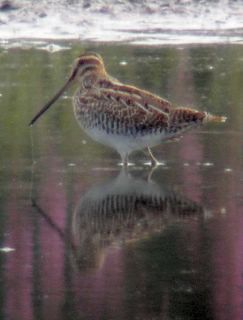My son, Charles (Charlie) Francis, was born on 22nd December 2006 at 9.20pm, a beautiful baby boy and the most wonderful moment of my life. This is a clear winner, and dwarfs any birding news. However...
There have been two new birds in my garden of late (as you might imagine, I haven't done any 'real' birding since 22nd December!). The first is a striking male Blackcap which has been a regular every day for the last week or so (allowing me to test my new camera, albeit at extreme range from the bedroom window). We have had one of these in the garden each winter we have been here, but they never lose their power to thrill as one of our few winter warblers.


Second has been the pair of Bullfinches which have graced our garden on several occasions, attacking our fruit trees but not yet reaching the bird table. These are also occasional visitors with the power to brighten up any day.
Addendum: Dec 31st - a Jay landed on our trellis today, a welcome garden 'first'. There aren't many mature trees around this part of the village, making this bird a rare occurence locally. Sadly it didn't hang around long enough to have its photo taken.




































